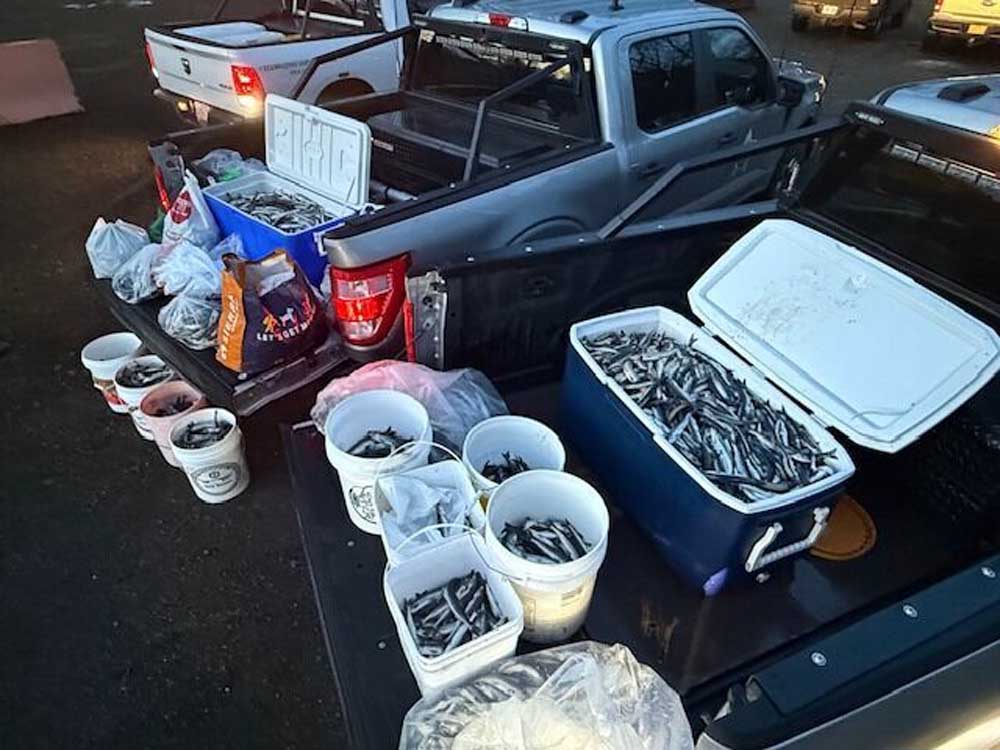Police seize 2,500 pounds of smelt during Troutdale poaching operation
Published 7:26 pm Saturday, March 29, 2025

- The seized smelt, that were improperly caught during a one-day fishery, were donated to the Confederated Tribes of Warm Springs.
As hundreds swarmed the banks of the Sandy River for the return of a rare one-day fishery, some got caught with their hand in the proverbial smelt jar, attempting to illegally take more than their allotment.
Trending
The smelt were back Thursday afternoon, March 27, as dippers caught the tasty fish along the banks of the lower Sandy River around Troutdale. The seven-hour fishery was opened by the Oregon Department of Fish and Wildlife after determining enough smelt were returning to the river on the final leg of their migratory journey.
To legally participate in the fun, folks were supposed to have a valid 2025 Oregon angling license and follow a harvest limit of 10 pounds per dipper. Not everyone did so — with the Multnomah County Sheriff’s Office reporting they seized 2,500 pounds of smelt during a joint poaching operation with Oregon State Police.
The fish were not illegally taken by just one person, but collectively among many who fished without a valid Oregon fishing license, or people who exceeded the per-person catch limit.
Trending
That weight of the confiscated fish is the equivalent of a bull bison, or a Mazda Miata.
Smelt are a crucial food source for many species and it wasn’t too long ago they became a protected animal due to overfishing in the past. All violators were issued a citation and the confiscated smelt were donated to the Confederated Tribes of Warm Springs Indian Reservation.
Ben Walczak, district fish biologist for ODFW’s North Willamette District, said the smelt’s return to the Sandy River during spring break is a happy coincidence.
Walczak described the smelt as a bit of a mystery, saying there isn’t a clear explanation for why the fish don’t return every year. Smelt are migratory, hatching in the Sandy River, then following the Columbia River to the Pacific Ocean, where they spend most of their lives. Biologists track smelt returns by observing the behavior of prey birds and other aquatic mammals.
What is it about the Sandy River that smelt like? It’s probably a combination of the right water temperature, stream flow, and sandy riverbed. Walczak said the smelt don’t venture far up the river, typically stopping at Dabney State Park before completing their spawning run. The run lasts only a couple of days.
Smelt fishing was a popular annual pastime on the Sandy River through the 1970s when hundreds of people could be seen lining the riverbanks armed with dipnets. But the smelt population dwindled, leading to the end of the dipnet tradition.
Though eulachon smelt were listed as threatened under the Endangered Species Act in 2010, their population has rebounded enough to allow for a controlled, limited harvest.
The last such fishery was a one-day event in 2023, following similar opportunities in 2015, 2014, 2003, and 2002.







